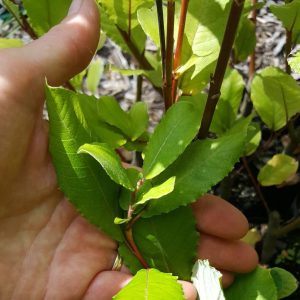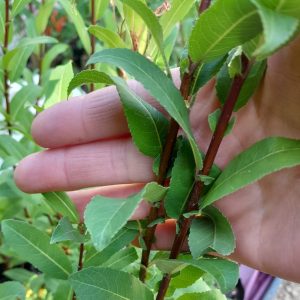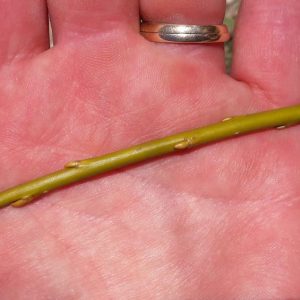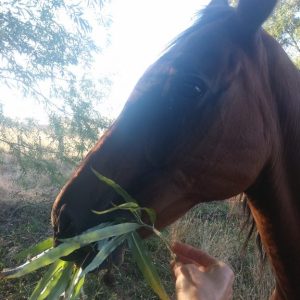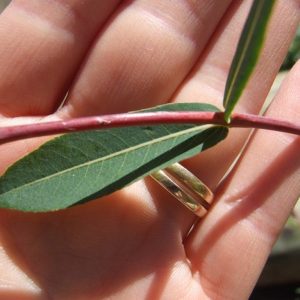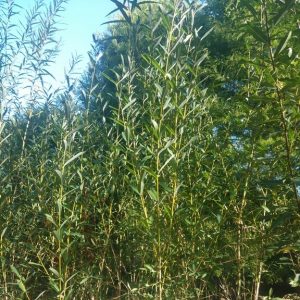LONG TERM OUT OF STOCK
SOLD OUT
OUT OF STOCK
AVAILABLE SPRING
AVAILABLE SUMMER
AVAILABLE AUTUMN
AVAILABLE WINTER
WINTER DORMANT
AVAILABLE SOON
$12.00 – $16.00Price range: $12.00 through $16.00
Also known as ‘Almond Willow’, this is a robust, deciduous shrub or small tree growing to 10 m tall, usually multi-stemmed and bushy, with an irregular, often leaning crown. The young stems are shiny dark maroon-black, becoming scaly on older stems with large scales exfoliating to leave orange-brown patches. It forms an attractive tree with good autumn colour.
Please note you are purchasing a potted plant – we do not sell cuttings.
Requires a sunny spot and moist soils, and will tolerate very wet soils and periodic flooding. Do not plant near buildings or drains as roots can be invasive.
If cultivating for basketry, plants should be cut to the ground each year in order to provide pliable stems the following year.
Willows have been used worldwide since ancient times to treat pain and fever. The Assyrians, Greeks and Native Americans were all aware of its analgesic properties. It has been used for joint pain, childbirth, sore throats, fevers, flu, headaches, back pain and toothache. An infusion of leaves can also be used to induce calm in nervous insomnia, and in a bath for rheumatism. Willow leaves have also been explored for use in wound dressings and gingivitis due to their antimicrobial action.
White willow (Salix alba) is the most used species, containing the highest levels of salicin but all willows contain it to some degree.
Primary Actions: antipyretic, analgesic, anti-inflammatory, astringent, tonic, bitter
Parts Used: bark, leaves



N.B. Shipping costs are added AFTER you have placed your order, you will then be emailed an invoice with bank details.

Smallest box rate:
This can fit up to 9 plants in 9cm pots.

Shipping a single tree can be expensive. We may be able to fit more in the box for the same price! See our shipping rates for single and multi tree boxes.

Combining sizes?
No problem, we will work out the best rate for you once you’ve placed your order.
Jo has a passion for growing herbs but is not a qualified herbalist and has no medical background.
We are lucky to have Patricia Beagle working here at times, who is qualified, and some of her advice does appear on these pages, but herbs act differently for different people and can interact with other medicines. We therefore always recommend that you consult with your own qualified health-care practitioner before using herbal products, particularly if you are pregnant, nursing or on any medications.
Kahikatea Farm cannot take any responsibility for any adverse effects from the use of the plants or a plant not having the effect it is reputed to have.
